One of my winter projects is recreation of the carolingian silver belt buckle and strap-end from Bj750 (which might or might not have been the woman’s belt, as the grave is a double grave). I plan on using it for a new sword belt.
I bought a very nice replica from Gudred, my usual vendor for anything cast in bronze or silver. This replica is, however, not strictly speaking a 100 per cent replica, and maybe rightly so.
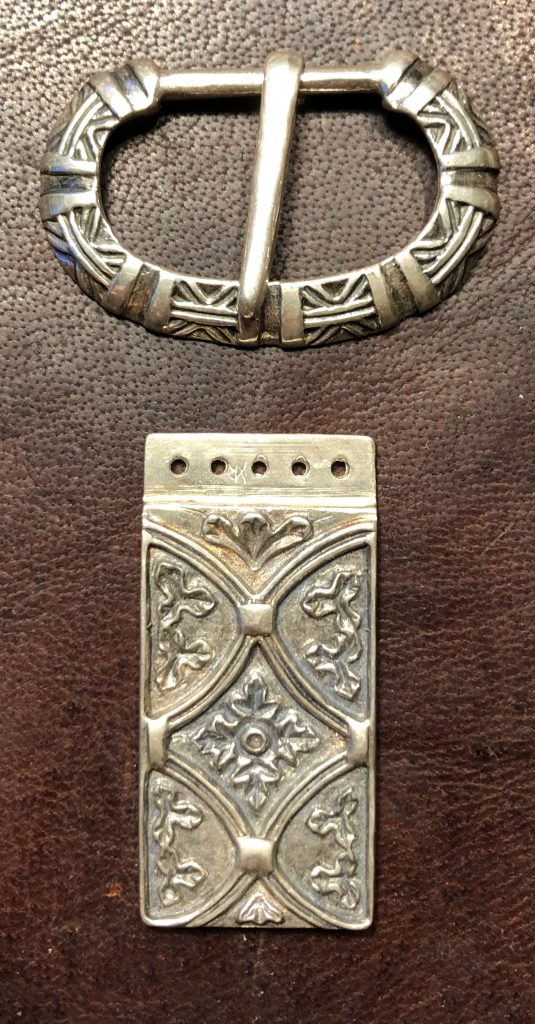
Analysis of the original find
The original finds, especially the strap-end, were modified, damaged and worn. This might be because they were already old when they were put to rest in Bj750, but also because they might have been used as „spare change“ at some point. The image from Birka I:Tafeln shows the original finds, but some construction details are hard to spot.
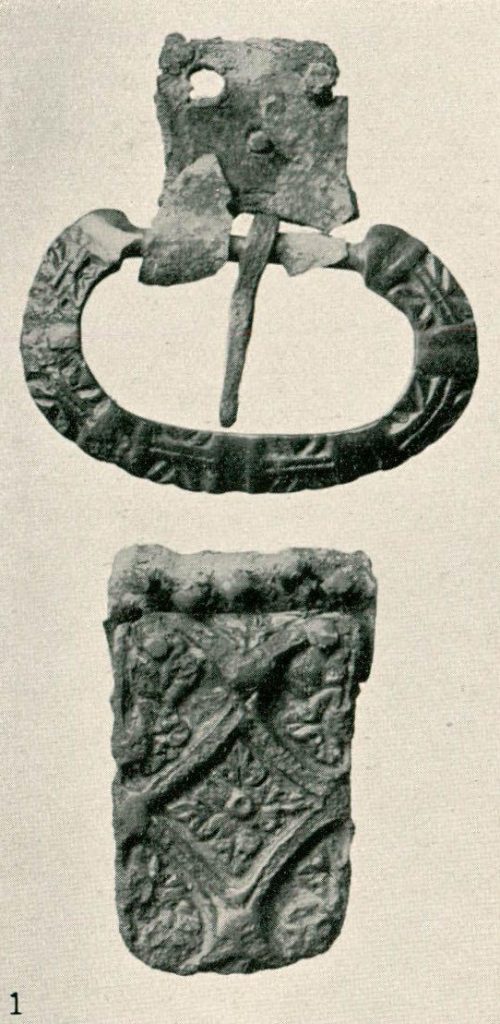
The strap-end is more round, even tongue-formed, than the replica. This is quite certainly due to wear, maybe also because the use as a strap-end was not its primary usage. There are trefoil brooches in carolingian design which ended up as strap dividers, and as pendants.
Anyway, I suspect that the item was not originally rounded, as the curve is not symmetrical (which it would be if it had been cast round, as numerous examples from other findplaces show). A small detail that can hardly be seen from the picture is the fact that the strap-end has been adapted for usage as a belt.
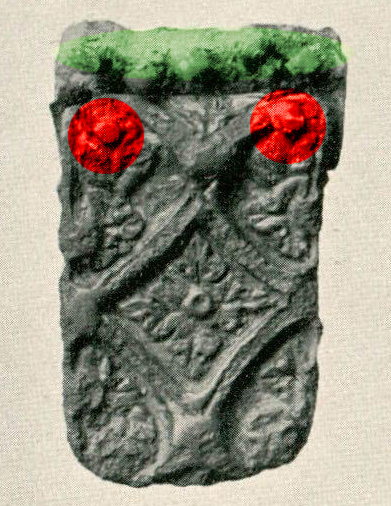
The picture above shows that there are not two rivets (as would be normal for a strap-end that is mounted at the end of a belt), but in fact seven. The rivets highlighted in red are either the original rivets (if the find was never anything but a strap-end), or rivets from the primary modification. They were then used to rivet a small silver plate (seen at the top border, overlap is visible on the top-right edge) to the strap-end. That silver plate has, in turn, five own rivet holes which were used to rivet it to the belt strap.
This method has two advantages:
- The belt leather surface is on the same height level as the surface of the strap-end, giving it a harmonious look.
- The unsightly rivet plate itself, which is of undecorated silver sheet metal, is invisible.
More interesting about this strap-end is the fact that it’s in fact decorated – if you want to call it that – on its back, too. This is a picture from Birka I: Die Tafeln.
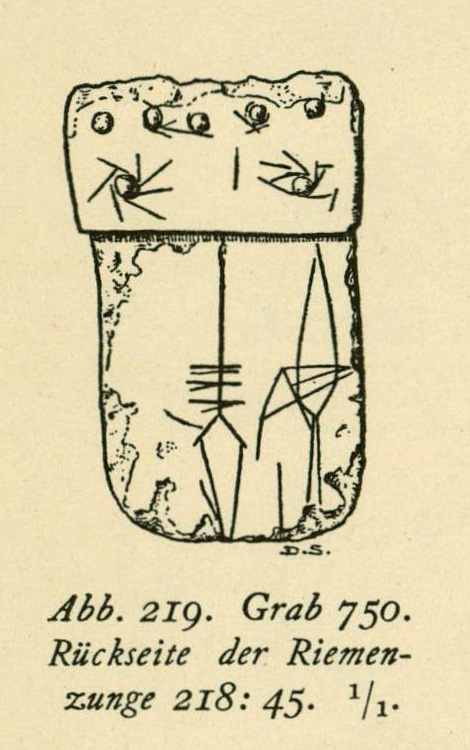
The primary and secondary rivets can be seen clearly, as well as scribbled decoration. Maybe this is supposed to show some religious or spiritual beings, has ritual meaning or someone was simply bored. Birka II likens the shapes to spears or arrows.
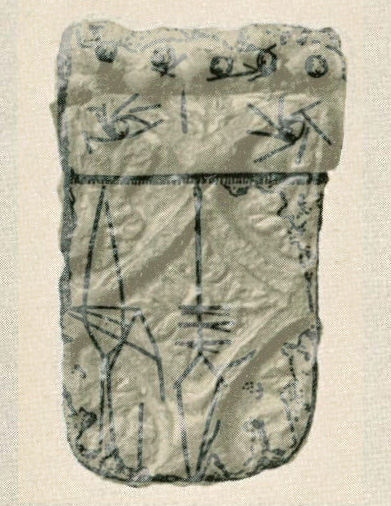
Either by sheer accident, or on purpuse, the vertical line and the arrow-shape on the backside is in line with the frontal decoration’s symmetry axis. The text in Birka II:2 (p110) describes the spear-decorated part as „a piece of silver sheet metal riveted to the strap-end“, which is either a mistranslation or simply wrong, because the lower part obviously seems to be part of the cast strap-end.
Another strap-end from Hedeby
The strap-end in this picture was found close to the castle („Hochburg“) from Hedeby in 1812, the picture is from Arents/Eisenschmidt, die Gräber von Haithabu.
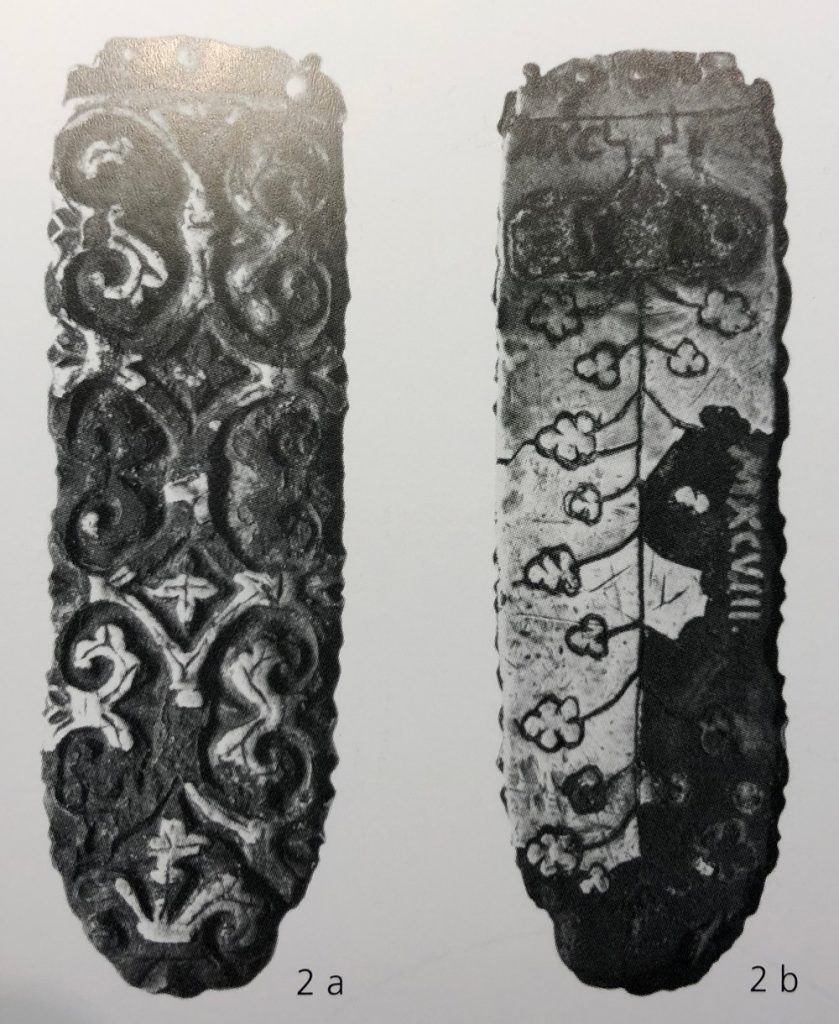
This strap-end shows very similar acanthus decoration, a more deliberate rounding at the end and – it’s decorated on the back, as well. This decoration looks a lot more purposeful than the one in Birka.
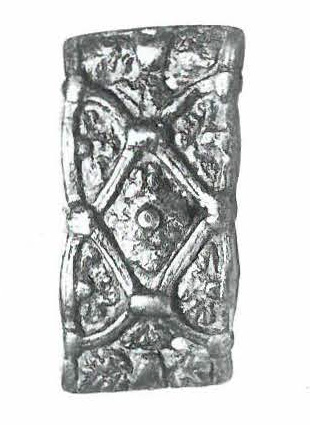
Yet another very close parallel is this find from Hedeby. Unfortunately, the findplace is unknown, it was prospected by Jankuhn and first published in his 1934 book about Haithabu. It’s a rectangular bronze part of a belt mount (?) with secondary usage as a fibula or brooch.
Mimic repairs or keep the nice look?
My question is: Should I mimic the repairs/reporpusing and the amateurish decoration, not knowing what it was intended for? Should I deliberately age and damage the replica?
The people who wore this belt clearly valued it so much that they not only repaired it several times to keep it in service, but also gave it to the deceased in their grave. Would they have access to the „nice“ version with clear edges, and no repairs, they would have used it, I presume.
However, the worn and secondarily decorated look is more accurate as a representation of the item’s *current* state.
What would you do? I’d love to read your opinions!

https://www.facebook.com/DCB.Lecocq/photos/a.570170519981624/603900049942004/?type=3&theater
https://www.facebook.com/DCB.Lecocq/photos/a.570183686646974/603918286606847/?type=3&theater